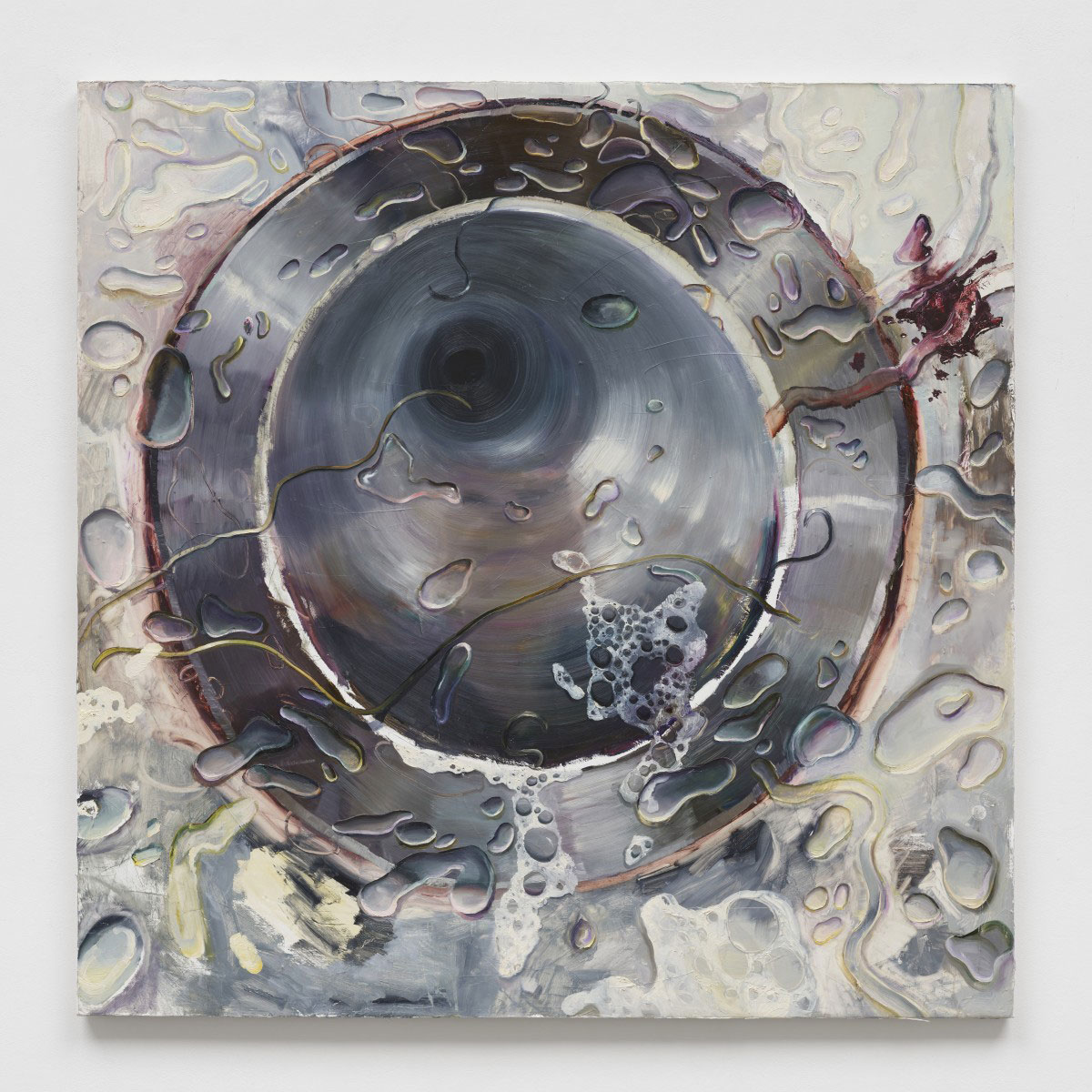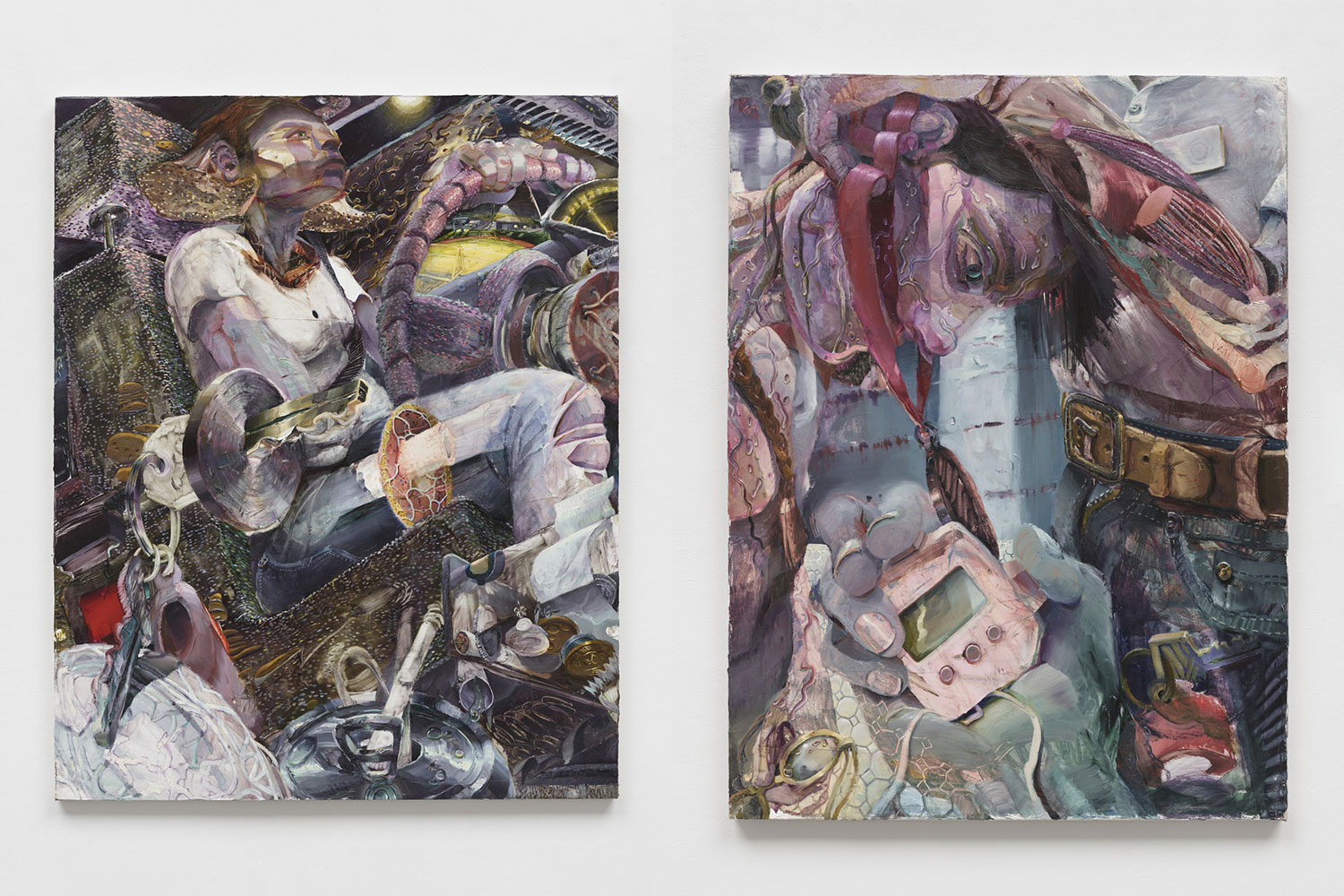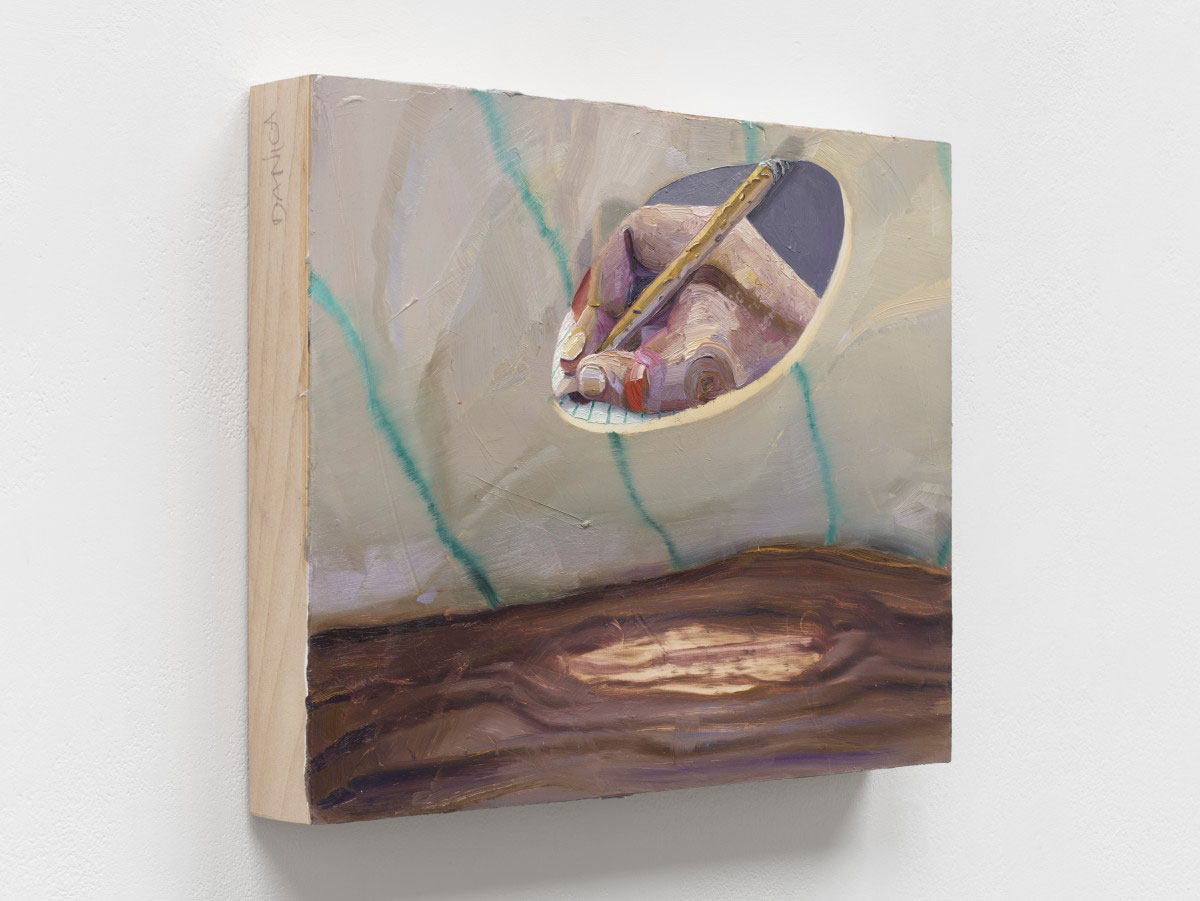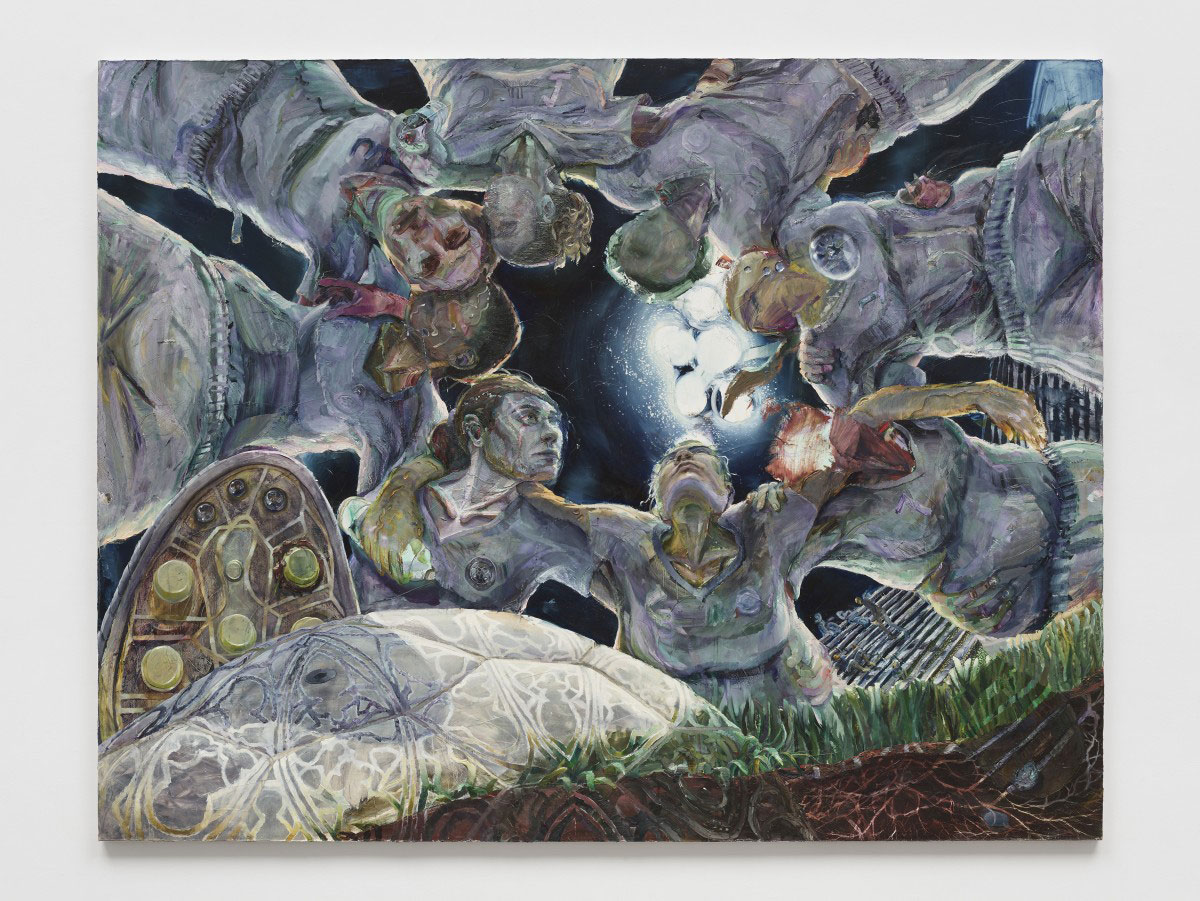PRESENTATION: Danica Lundy-Stop Bath
 Danica Lundy’s sensorial, figurative paintings are compositionally complex and slow to reveal their nature. Describing her language as ‘a visceral hyper-reality that shows everything at once’, she exploits painting’s potential for panoptical vision, using multiple perspectives, hybrid forms and differing scales in her complex tableaux. “A painting can become a poem, a nightmare, a construction site; a lived-in arena for testing out the limits of one’s own power”, she has stated.
Danica Lundy’s sensorial, figurative paintings are compositionally complex and slow to reveal their nature. Describing her language as ‘a visceral hyper-reality that shows everything at once’, she exploits painting’s potential for panoptical vision, using multiple perspectives, hybrid forms and differing scales in her complex tableaux. “A painting can become a poem, a nightmare, a construction site; a lived-in arena for testing out the limits of one’s own power”, she has stated.
By Dimitris Lempesis
Photo: White Cube Gallery Archive
Danica Lundy’s figuration plays out in densely crowded narrative scenes. Alive with incident, autobiography yields to larger themes in polyphonic narratives that reflect the varied theatre of human life: from the epic to the banal, and the torrid to the ecstatic. Starting with a rudimentary vision – what she calls a ‘mind-made structure’ – Lundy’s paintings evolve from detailed drawings into improvisational and gestural brushwork. Developing, in some instances, into highly realistic passages and in others into a predominantly expressionistic painterly language, her images oscillate between revealing and concealing their subject and intention. Featuring a group of monumental paintings made during the past year, the exhibition “Stop Bath” demonstrates Danica Lundy’s particular visceral figuration; a sensorial and visionary form which the artist describes as a ‘hyper-reality that shows everything at once’. Lundy’s paintings are compositionally complex and slow to reveal their nature. Alive with incident, autobiography yields to larger themes in these polyphonic narratives that reflect the varied theatre of human life: from the epic to the banal, and the torrid to the ecstatic. Lundy exploits painting’s potential for panoptical vision, using multiple perspectives and hybrid forms to evoke sensations, sights, smells and sounds in her vast tableaux of colliding realities. Produced in the shadow of the death of her father, a photographer for a local newspaper, Lundy’s choice of title for the exhibition is both a tribute to him and a metaphor. Referring to the last stage in photographic development, where a fixing agent is used to secure the final image, “Stop Bath” suggests a vision arrested, as well as a memory preserved. One of the largest paintings in the exhibition, “Chamber” (2022), melds personal memories with technical erudition in a scene framed by the parts of a dis-assembled camera. The lens forms a circular aperture in its centre, within which the artist’s ailing father reclines on a hospital bed flanked by two young women. Surrounded by a mass of interlocking, layered motifs – wheels, cogs, cords, medical equipment, mirrors, brass and metal knobs and bolts – the ensemble suggests a musing on photography in relation to the painted image and modes of seeing and depicting, as well as a statement on the role of the camera within her father’s life. In works such as “Overtime” and “Romancing the Sink” (both 2022), the artist revisits the subject of adolescence. Depicting these youths using a range of painterly techniques, from loose washes to built-up passages of paint, the physical terrain of her paintings themselves suggests the abrupt shifts, accelerated growth and important changes that make up the teenage years and the journey towards self-realisation. Addressing how it feels to inhabit a body and how this inflects our perceptions, Lundy makes an explicit connection between emotional uncertainty and bodily discomfort. She uses her subjects as ‘receptacles for chaos and danger, improvisation, risk and ecstasy’, as a means to reflect and embrace an overwhelming sense of abandon. Mechanical, David Cronenberg-like motifs crowd her paintings, and cars often feature as intimate spaces in which to frame events. In “Baby can you see through the tears” (2022), a woman is shown behind the wheel, seen from floor up, as if we are lying at her feet. Statuesque, the car seat behind her a boxy, glittering throne, the subject’s face is expressionless, her gaze towards the road ahead. Floating in the foreground of the painting, an oversized ignition key, smouldering cigarettes stuffed into a soda can and other detritus suggest the enclosing shell of the vehicle, while as if in x-ray vision, there is a cutaway view of her femur in the cross-section of her thigh. Lundy is drawn to the complex conceits and vivid metaphor of Metaphysical poetry and certain lines of John Donne were in her mind as she created these paintings. “License my roving hands and let them go / Before behind, between, above, below” he writes in an address to his mistress, that Lundy takes instead as grounds for the painter’s roving attention. Her space-expanding compositions make, to quote Donne, “each little room an everywhere”. After the manner of early Netherlandish painting, where windows and apertures frame distant landscapes, Lundy offers glimpses beyond the confines of these worlds. Apertures, holes and openings create formal connections by the repetition of circular forms, and transfixing shafts of light are a recurring motif. In “Cut” (2022), for example, we look down into the vortex of a sink drain while in “Overtime” (2022), we gaze up into the tightly bound form of a sports huddle, the bodies creating a rhythmic enclosure, echoed above by the celestial-like ring of lights of the stadium.
Photo: Danica Lundy, Trunk, 2022, Oil on canvas, 48 1/16 x 80 1/8 in. (122 x 203.5 cm), © Danica Lundy, Courtesy the artist and White Cube Gallery
Info: White Cube Bermondsey, 144-152 Bermondsey Street, London, United Kingdom, Duration: 8/7-11/9/2022, Days & Hours: Tue-Sat 10:00-18:00, Sun 12:00-18:00, www.whitecube.com/


Right: Danica Lundy, Silver, 2022, Oil on canvas, 48 1/16 x 36 in. (122 x 91.5 cm), © Danica Lundy, Courtesy the artist and White Cube Gallery



